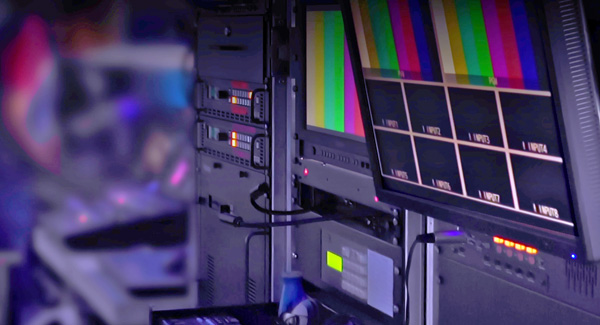
AJA has released FS-HDR v4.1 for its real-time HDR/WCG converter and frame synchronizer. Available as a free firmware update, FS-HDR v4.1’s frame buffer depth has increased from 6 to 20 frames. It also has updated v1.5 BBC HLG LUTs, new NBCU LUTs, expanded closed captioning support and a new ability to pass-through or translate critical ancillary data, even while performing a conversion.
During the pandemic, the use of augmented reality and virtual cameras that require longer processing time has quickly grown for live productions, demanding longer synchronisation periods for other sources. In response, FS-HDR v4.1 increases the device’s frame buffer depth to support configurable delays of up to 20 frames. This free update is available to all FS-HDR users and does not require a hardware change.
To help make HDR workflows simpler and take advantage of new BBC HLG LUT developments, FS-HDR v4.1 extends support to v1.5 BBC HLG LUTs. Among the new v1.5 BBC HLG LUTs are two for direct mapping and up-mapping conversions for SDR BT.2020 to HLG BT.2100, with improved colour saturation in display light HLG BT.2100 to SDR BT.709 down-mapping conversions.

FS-HDR v4.1 also adds support for new NBCU LUTs, developed by NBCUniversal Media in collaboration with Cromorama to enable a workflow for single-master production of simultaneous HDR and SDR content with the highest quality possible for the media. NBCU LUTs include SDR, HLG and PQ LUTs that maximize the dynamic range and colour volume in HDR, without compromising the original SDR broadcasts.
FS-HDR v4.1 increases ancillary data pass-through or translation capabilities for many different formats and conversions. In transmission applications requiring the use of SCTE-104 markers for ad insertion, FS-HDR will now automatically pass-through SCTE-104 packets. FS-HDR’s new Timecode Xlator will pass-through or translate ancillary timecode (LTC, VITC1, or VITC2). FS-HDR v4.1 also expands the set of conversions that support pass-through of Closed Captioning.
Brad Cheney, VP, field operations and engineering, FOX Sports, said, “As sports fans have come to expect a more dynamic, interactive experience, AR is quickly becoming common in production but requires significant video processing. We began to need an increased frame buffer on the device to support these workflows.
“Updates like FS-HDR v4.1, which make improvements without requiring new hardware, help us stay ahead of evolving production requirements. We’ve already applied FS-HDR v4.1 to our MLB productions, and look forward to integrating them across the board into our basketball, football and motorsports productions.” www.aja.com





